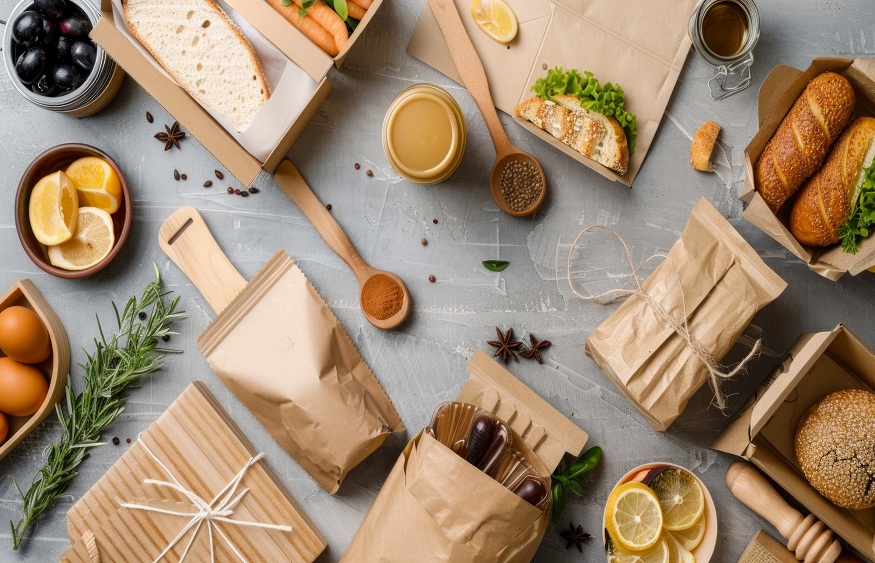The Role of Packaging in Preserving Food Quality
3 min read
Sustainable eco-friendly packaging for food and products.
Product packaging serves the vital functions of safely containing, protecting, and providing information about the items we use every day. Food packaging in particular plays an especially critical role in maintaining quality and safety as perishable items travel from farmers, processors, and packagers through distribution centers to retailers and finally homes. In the following passage, we will look at several key ways proper packaging preserves freshness and reduces food waste across supply chains.
Preventing Physical Damage
As food moves manually and mechanically many times, sturdy packaging shields items from physical effects like drops, shakes, crashes, and outdoor weather exposure. Durable materials like plastics, metals, glass and molded slurry paper pulp guard against mechanical damage, temperature swings and light degradation during handling and transport. Sturdy containers, resilient cushioning, and tamper-evident seals prevent bruising, leaking, desiccation, spoilage, adulteration, and contamination issues. Maintaining packaging integrity allows products to arrive to consumers in optimal quality condition.
Excluding Oxygen and Moisture
For many perishable products, excessive exposure to oxygen and moisture causes faster degradation via oxidation, mold blooms and bacterial overgrowth. Protective polymer films and multi-layered packaging materials often incorporate gas barriers that effectively seal out outside humid air and associated risks. Such controlled interior environments slow respiration rates in fresh produce, inhibit bloom development in ground coffee, and prevent oxidation in nuts over longer durations. Tight hermetic heat sealing also maintains cereal crispness and nut crunch for months without sudden starch or oil degradation. According to the experts at Epsilyte, the integrity of quality barrier films, foils, and food packaging EPS foam cartons all work to naturally prolong foodstuff quality and safety.
Providing Tamper Evidence
See-through packaging meets consumer preference to visually inspect purchases before buying while still protecting contents from contamination or contamination. Vacuum skin packaging and tamper-proof seals provide further assurances that factory-prepped products arrive in unopened condition just as originally processed and packaged. Prominent tamper-evident indicators combat risks of intentional contamination, too. Establishing brand trust and food supply security starts with attentive quality packaging.
Informative Labeling Details
Besides safeguarding products inside, informative labeling details outside packaging surfaces communicate lot codes, freshness dates, safe handling instructions, and brand contact details right on products. Standardized nutrition facts tables, ingredient lists, and allergen and third-party certifier call-outs guide purchasing choices around nutrition, diets, and health needs. Legible packaging serves as a critical communication conduit between largely anonymous producers and consumers.
Accelerating Distribution Speed
High-performing protective packaging facilitates more efficient pallet stacking in warehouses for storage and faster retail product put-away by store staff. Standardized pallets, cases, cartons, and multi-unit formats ensure products smoothly traverse intricate supply and cold chains to market. Optimized packaging size and shape increases freight truck trailer capacity for perishables and dried goods alike. Purposeful packaging designed for existing distribution infrastructure speeds product flow to hungry buyers.
Limiting Food Waste
Of the food produced but ultimately uneaten in the U.S., much loss occurs post-harvest through premature spoilage and transit damage. Meticulously engineered barrier packaging preserves harvest bounty and pasteurized products to prevent waste across entire supply chains from farm to table. Recyclable food packaging EPS foam lining cases of produce, vacuum skin wrapped meats, and sealed deli containers all stretch intended product lifecycles feeding more people with less waste.
Conclusion
While packaging weight and materials themselves impact the environment, the preserved food delivered thanks to high-performance packages far outweigh packaging’s footprint. Improving consumer education and infrastructure systems to collect and recycle more packaging after use complements industry innovations, keeping sustenance safe post-purchase. Balancing essential package protective functions with responsible material minimization, recovery and reuse benefits consumers, retailers, and the planet.





